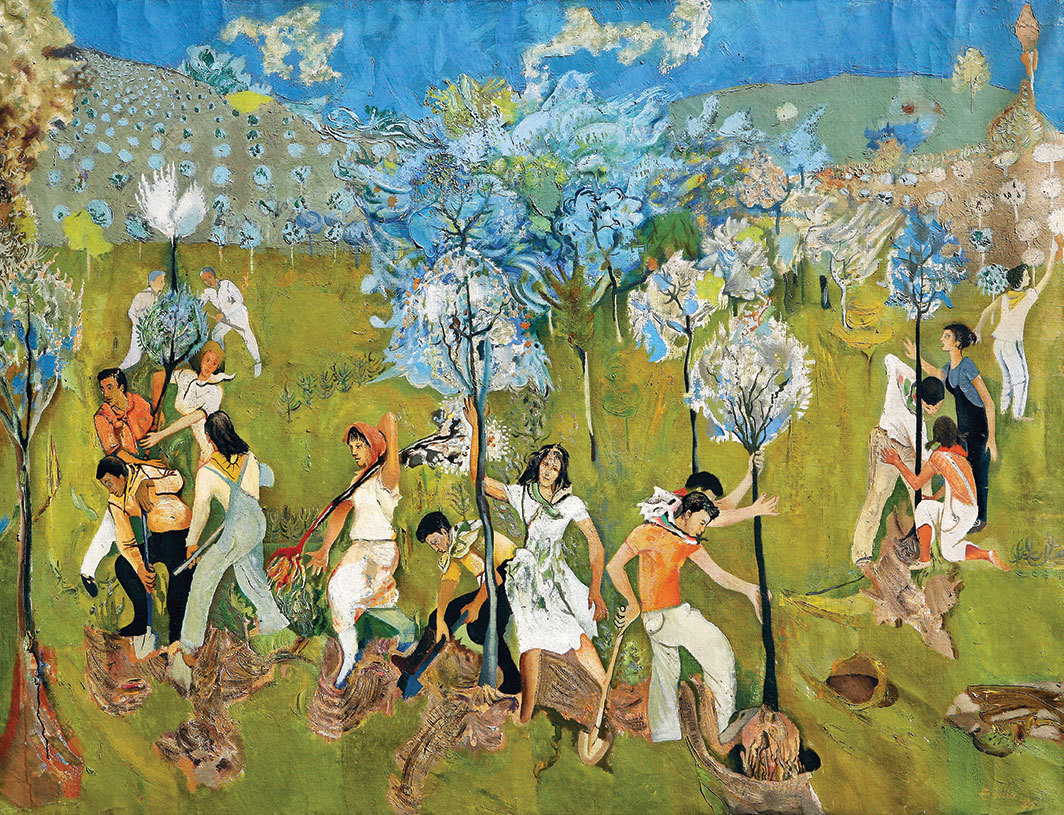
Edi Hila was born in Shkoder in 1944. Hila studied painting at the National Academy of Art in Tirana until 1967. Around 1973–1974 he was found guilty of ‘propagating anti-conformist tendencies in relation to the social realist aesthetic’ and sentenced to an indefinite period of corrective labour, working as a factory porter After the Hoxha dictatorship collapsed in 1990 Hila was became a lecturer at the National Academy of Art. He took part in numerous international exhibitions:Venice Biennial, Albanian Pavilion 1999; The Modern Museum Stockholm, 1999; “After the Wall”, Hamburger Bahnhof, Berlin and the Ludwig Museum Budapest 2000; Villa Romana, Florence, “Senza angeli” 2008; Galerie JGM, Paris, “Paysages Transitionnels” 2009; Gallery Goodman, New York, 2014; AASA, London, England, “Potential monuments of unrealized futures”, 2015 etc. His works have recently been acquired by the collection of the Musée d’Art Moderne, Centre Pompidou, FRAC pays de la Loire, and the Municipal Funds of Paris.
« Parashuta – Altar» / 2008 / 108 X 110 cm / oil on canvas.
It is exhibited in the Villa Romana, an art centre and residence in Florence, and it is part of the “Senza Angeli” series.It is also one of the key tableaus of this series. Here are a few observations by the artist about it:
“’Parashuta-Altar’ (Parachute-Altar) shows part of a hanging parachute, snagged somehow, but which, in its composition, and viewed conceptually, makes us think indirectly of the idea of an altar.
During the years of my punishment with forces labour, freedom and isolation were two opposites, in eternal debate and never separated from one another.
I was convinced that, as a theme for the exhibition in Florence, I should draw on the relationship that I created with art, during my stay in this city, as well as freedom and isolation, two essential subjects, that together with classic elements, largely determined the aesthetic aspect for these tableaus. Genuine communication with genuine art produced this, and although distant, and for many years in isolation, this was the mainstay of my creativity …..
I should add that freedom and isolation were not my only problems.
But this theme had a broad dimension of generality, and a content that had wide appeal.”
Translated by Alexandra Channer
We express our thanks to him for sending us the below reproduction and giving us the permission of its publication
